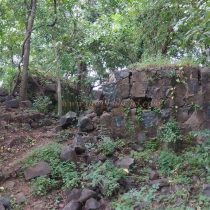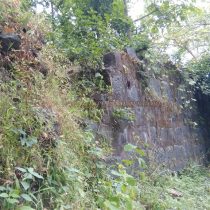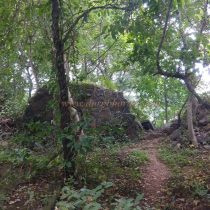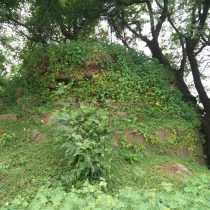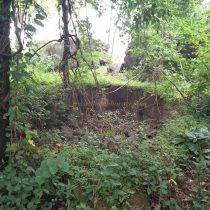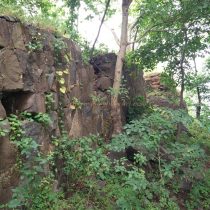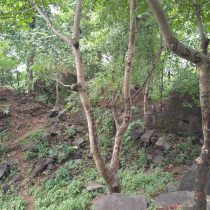BALLALGAD
TYPE : HILL FORT
DISTRICT : PALGHAR
HEIGHT : 410 FEET
GRADE : EASY
Ballalgad is a fortified watchtower on a small hill behind Kajali village on the Maharashtra-Gujarat border. The fort is so small that even most of the ancient mansions around Maharashtra are bigger than this fort. The fort is located in Talasari taluka of former Thane and now newly formed Palghar district, adjacent to the Mumbai-Ahmedabad highway. The fort is located at a distance of 150 km from Mumbai, 42 km from Dahanu, and 12 km from Talasari taluka. The fork leading to the village is not easily recognizable as the village of Kajli is on the inner side of the highway. In about 5 minutes we reach the school in the village. There is a footpath leading to the fort in front of this school. The height of Ballalgad is 315 feet from the sea level and it is only 90 feet from the village of Kajali at the foothills.
...
As there is no drinking water on the fort, water should be filled from the hand pump in front of the school. A statue of a forest deity on a horse carved in stone under a tree can be seen near the top of the fort. The idol is considered as hero stone due to the sun and moon image carved on the top of the idol. But looking at the carvings on the idol, this idol has been made in recent times. While walking in North Konkan, you can see the sun and moon carved on the upper side of many stone sculptures. Moving ahead after seeing this idol, you can see the ramparts of Balalgad and the two bastions in it. A collapsed wall parallel to the ramparts can be seen before these ramparts. The exact purpose of this wall is not recognized. The fort of Ballalgad is protected by four bastions and a rampart with two gates. The height of the ramparts on the outside is about 15 feet and the width is 6 to 8 feet. The walls are lined with barrage. Large boulders are used for the construction of the ramparts, and the overall structure of the fort shows that it is built by the Portuguese. There are two cisterns inside the ramparts, one used for water and the other used for storage. Apart from this, two architectural quadrangle structures can be seen in the interior. You can walk around the entire fort in half an hour and descend in 15 minutes. When the Portuguese took over the area from the Sultan of Gujarat in the 14th century, they must have built this fort and another chain of forts between Daman & Vasai parallel to the land. Later for some time, this area was in the possession of the Koli kings of Ramnagar. In 1677, Moropant Pingale annexed this part of Ramnagar to the Swarajya. For the next 66 years from 1683, the fort was in the possession of the Portuguese. In the Vasai campaign of Chimajiappa, in 1739, Krishnaji Mahadev Chaskar conquered this area and Ballalgad came under the control of Marathas. In 1754, the fort was returned to the Koli king of Ramnagar. In 1802, as per the treaty, the province fell to the Peshwas. In 1817, Ballalgad was captured by a detachment of English officer Godard.
© Suresh Nimbalkar



